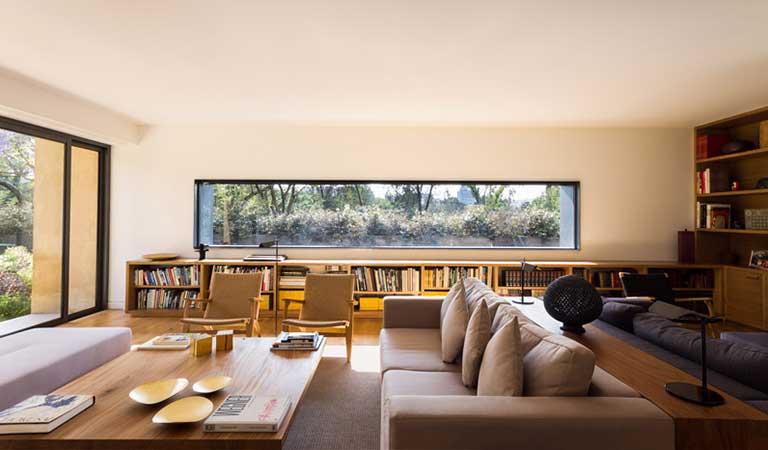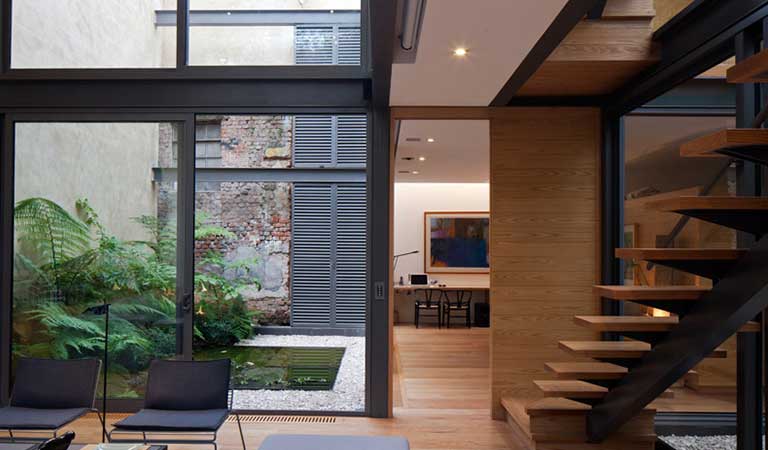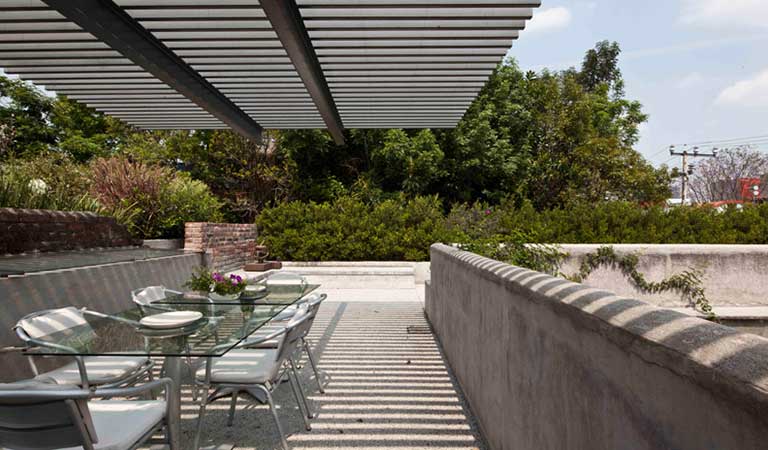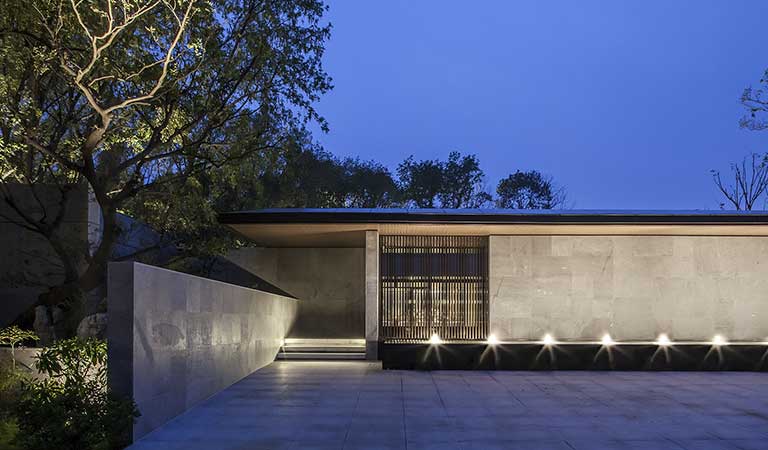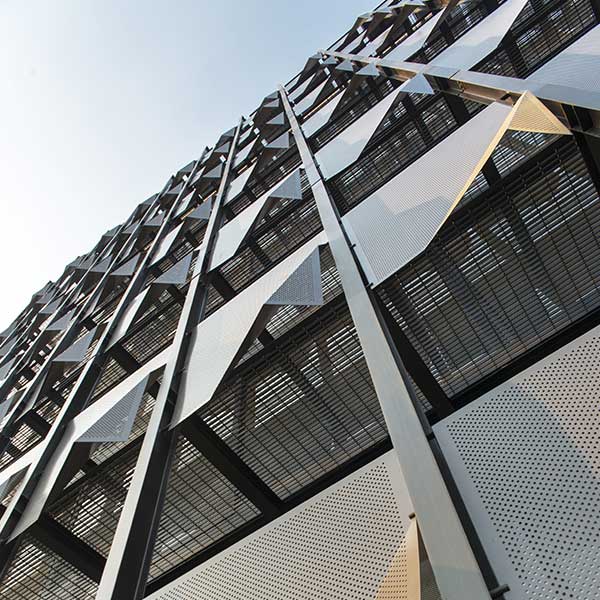Also from Mexico, we share with you the ideas and work behind the practise of Andres Stebelski Arquitecto. With a constant learning attitude towards his own projects, Andres Stebelski produces a line of works clear on its own language and expression, sharing an extraordinary devotion to its vernacular and cultural environment.
— Office —
What’s beautiful about architecture is that it’s a way of living. You’re always learning, everything you see, everything you live, everything adds up and ends up in whatever you do in architecture. One project brings you to the next and with every project you get more tools and you get more skills for the next, and I think that’s fascinating.
With architecture every time you do a project you learn new things, you meet new clients, new materials and new spatial things…everything brings you up to the next and I think that’s very encouraging.
— Approach —
Architecture is how you understand your surroundings and how you interpret them, and then most important of all, is how you share them with other people. I think that’s what architecture is all about. And I think in every project you put a little bit or I put a little bit of myself into it…and then it gets built and you have to let it go.I think it’s the most fascinating thing, when you let it go and when other people start experiencing it. And then they start interpreting it and appropriating the space, and that’s when it becomes successful or not, and I think that’s one of the parts of architecture that moves me.
Once we understand that architecture is made for people everything changes. We have to focus on other things and there are many many levels and many things that make architecture, but if we keep people in the center of it, I think architecture can be successful and fulfill its goal that is to serve people.
The hard thing about being an architect is to simplify and I try in every project to think simple and…it doesn’t mean it’s not complex. Simple things sometimes are the more complex, to have everything wrapped up in a little box, is the most complicated thing. Once it’s achieved it’s a great feeling.

Cuatro Patios House - © Onnis Luque

Cuatro Patios House - © Onnis Luque

Cuatro Patios House - © Onnis Luque
— Start —
In every project you start with what you have, first you have to look at what you have around you…then you combine this with the clients needs. In the end for me, architecture has to make sense, and when it makes sense, it’s a go. When it’s functional, when it’s economically feasible, when it’s culturally adapted, when it’s site specific, that’s when the lines start making sense.
I also believe that when you do a project, everything has to have a purpose. It can be an aesthetical purpose, it can be a functional purpose or a structural purpose, but if everything has a purpose then it’s synthesized and it makes sense. That’s for me when a project is achieved and ready to go.

Carpinos house - © Nasser Malek

Carpinos house - © Nasser Malek

Carpinos house - © Nasser Malek
— Clients —
Like every project, each client is different. They’re all unique like each project, and their level of commitment to the project is different. In the end what I try is to translate the client’s needs into architecture, and at the end if the client feel that’s exactly what he wanted, that for me it’s when a project is well achieved.
What I really think is very important is that every design decision we make as architects has a deep impact in people’s lives, and that’s why there has to be an immense, a big responsibility towards the project and towards the people that hire you.
— Mexico —
Being an architect in Mexico is great, for many reasons. We have an incredible background, an incredible history of architecture, from the pre-columbian to the colonial, to the modern. And also an incredible vernacular architecture, that I’m personally very attached and love.
What I love about being an architect in Mexico is that we have a lot of freedom. We have a very mild climate, at least in Mexico city where I work, and that gives us an incredible flexibility. The architecture we do has lots to do with environment, with the inside and the outside, spaces flow, light comes in…like I said, I’m very lucky to work here.

Ediciones Tecolote - © Onnis Luque

Ediciones Tecolote - © Onnis Luque

Ediciones Tecolote - © Onnis Luque
— Material —
When you’re building something sometimes the project asks you: “Please put a window here”…and materials are part of it. Sometimes the project asks for specific materials.
I love materials, and I think I have a very small knowledge of materials yet, and that’s a great thing about being an architect. I’m just starting to work with materials, and every time I use a different material it gives me more tools for the next project.
I can’t tell you a specific material that I like, I like them all. And as time goes by I know more and I bring them to my architectural language, and I think that it enriches architecture itself.

Veramendi House - © Nasser Malek

Veramendi House - © Nasser Malek

Veramendi House - © Nasser Malek
— Influences —
In contemporary architecture for example I would like to cite this convent made by Luis Barragan in Mexico, the Capuchinas Convent. Once when I went there, I went to see the nuns pray at six in the morning with the sun rise, and that’s when I decided I wanted to be an architect. It was an incredible moment because it was architecture as part of something that was more than architecture. It created feelings, it all made sense. It was not only beautiful, not only functional, not only appealing with the materials and everything we talked about, it was more than that. It’s very hard to find that.

El Coporo Community Centre - © Andres Stebelski

El Coporo Community Centre - © Andres Stebelski






